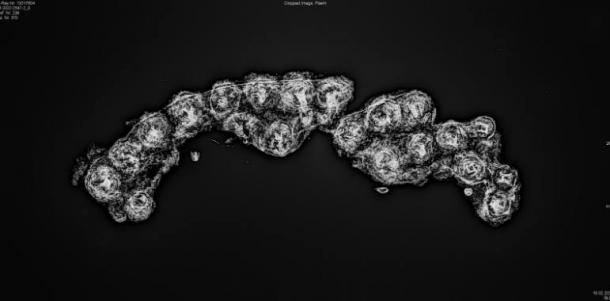
Archaeologists Discover a 2,000-year-old Roman Military Sandal with Nails for Traction
Archaeologists have unearthed the remains of a 2,000-year-old Roman sandal near an ancient military fort in Oberstimm, Bavaria in Germany. The discovery was made while conducting excavation work at a civilian settlement on the outskirts of the Roman fort. According to the Bavarian State Office for Monument Preservation (BLfD), the settlement was occupied sometime between 60 and 130 AD.
The sandal or caliga, was identified using X-ray imaging, where it was determined that it was worn by a Roman soldier and fitted with iron nails on the bottom for traction. This type of footwear was essential for soldiers traversing rough terrains, much like modern cleats.
- Caesars Loved Tweezers! Plucking Romans Were Obsessed With Hair Removal
- Roman Armor, the Backbone of the Ferocious Roman Warrior
In a statement, a consultant at the BLfD, Amira Adaileh, explained the significance of such a find:
“So-called caligae were mainly worn by Roman soldiers during the Roman Empire. The discovery illustrates that the practices, lifestyles, and even the clothing that the Romans brought to Bavaria were adopted by the local people.”
This very specific caliga was retrieved from the bottom of a well. Its remarkable preservation is likely due to the unique conditions at the bottom of the well. Such a find is extremely rare.

The remains of the sole of the Roman caliga or sandal. (Courtesy of the Bavarian State Office for Monument Protection)
The general conservator at the BLfD, Mathias Pfeil, states:
“Surprise finds like the shoe sole from Oberstimm repeatedly demonstrate that valuable information is still gathered even after the completion of archaeological excavations.”
The Roman caliga was specifically designed to prevent blisters and other foot conditions which include trench foot, a common ailment for soldiers on long marches. By design, the sandal provided both stability and grip. It was a crucial accessory to the Roman soldier as they routinely encounter hard and varied terrains.

An X-ray image of the remains of the Roman caliga or sandal. (Courtesy of the Bavarian State Office for Monument Protection)
Lasting from 27 BC to 476 AD, the Roman Empire saw a gradual evolution in military footwear; starting from the open-toed caligae to the more enclosed calcei at the end of the 1st century AD. This transition was largely motivated by the need for warmer gear and protection for soldiers.
The discovery of this sandal highlights the influence the Romans had on local Bavarian populations. Adaileh noted that:
“The practices, lifestyles, and clothing that the Romans brought to Bavaria were adopted by the local people.”
Top image: A recreation of the original Roman sandal. Source: Courtesy of the Bavarian State Office for Monument Protection.
















Comments
The iron nails were both for traction and reducing wear.